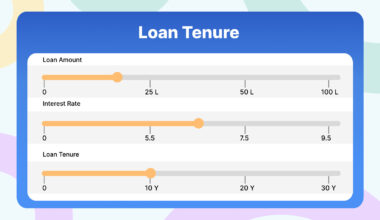In the world of finance, collateral loans have emerged as a popular and accessible borrowing option for individuals and businesses alike. If you’ve ever wondered what a collateral loan is and how it works, you’re not alone. Understanding the ins and outs of this type of loan can empower you to make informed financial decisions and unlock the potential of your valuable assets.
In this guide, we will delve into the concept of collateral loans, exploring their definition, mechanism, and benefits.
Understanding Collateral Loans
Collateral loans, also known as secured loans, are a type of borrowing where the borrower pledges a valuable asset as collateral or security to the lender. The collateral serves as a form of protection for the lender, providing them with a way to recover their funds if the borrower fails to repay the loan as agreed.
The pledged asset can be real estate property, a vehicle, jewelry, valuable artwork, or any other valuable possession with a substantial market value. The lender assesses the value of the collateral and typically allows the borrower to borrow a percentage of that value as the loan amount.
Features of Collateral Loans
- Pledged Assets: Borrowers are required to pledge valuable assets, such as real estate, vehicles, or valuable items, as collateral to secure the loan.
- Lower Interest Rates: The presence of collateral reduces the lender’s risk, leading to lower interest rates compared to unsecured loans.
- Easier Approval: Collateral provides security for the lender, making collateral loans easier to obtain, even for borrowers with less-than-perfect credit.
- Higher Loan Amounts: The loan amount is often determined based on the value of the collateral, allowing for larger borrowing capacities.
- Flexible Usage: Collateral loans can be used for various purposes, from financing major purchases to consolidating debts or funding business ventures.
- Longer Repayment Period: Depending on the loan type and amount, collateral loans may offer longer repayment periods, reducing monthly installment amounts.
- Risk to Pledged Assets: If the borrower defaults on the loan, the lender has the right to seize and sell the pledged assets to recover the outstanding loan amount.
- Improved Credit Options: Successfully repaying a collateral loan can positively impact the borrower’s credit score, potentially opening up better credit options in the future.
- Asset Appraisal: Lenders assess the value of the collateral before determining the loan amount, ensuring the asset provides sufficient security.
- Personal and Business Use: Collateral loans are available for personal and business purposes, catering to different financial needs.
Assets Eligible for Collateral
When applying for a collateral loan, various assets can be pledged as security:
- Motor Vehicles and Machinery: These are considered movable assets and can be used as collateral due to their resale value. In certain instances, lenders may require borrowers to hand over physical possession of the asset to secure the loan.
- Precious Metals and Valuables: Gold is a common asset used as collateral due to its inherent value. Gold coins, bars, and jewellery can be pledged. Other valuable items, such as antiques and fine art, can also serve as collateral.
- Real Estate: This is one of the most frequently used forms of collateral. Whether it’s your home or a plot of land, its substantial value can be leveraged to secure a loan from financial institutions.
- Financial Investments: Personal investments, including stocks, bonds, and mutual funds, can be pledged as collateral. Sovereign gold bonds can be acceptable collateral for loan applications, whether from a bank or a Non-Banking Financial Company (NBFC).
Applying for a Collateral Loan
Applying for a collateral loan involves several steps to ensure a smooth and efficient process. Follow these steps to apply for a collateral loan:
- Evaluate your financial needs: Determine the specific purpose of the loan and the amount you require. Assess your repayment capacity to ensure you can comfortably manage the loan.
- Choose a lender: Research and compare different lenders that offer collateral loans. Consider factors like interest rates, loan terms, fees, and reputation to find a lender that suits your needs.
- Select the collateral: Identify the asset(s) you wish to use as collateral. The asset’s value will play a significant role in determining the loan amount you can borrow.
- Gather documentation: Prepare the necessary documents, which may include proof of identity, address, income, and ownership of the collateral. Each lender may have specific documentation requirements.
- Fill out the loan application: Complete the lender’s loan application form. Provide accurate and detailed information about yourself, the collateral, and the loan amount you are seeking.
- Submit collateral assessment: If required, arrange for a professional appraisal or valuation of the collateral. The lender will use this assessment to determine the asset’s market value.
- Wait for approval: The lender will review your application, assess your creditworthiness, and evaluate the collateral’s value. This process may take a few days to a few weeks.
- Review loan terms: Once approved, carefully review the loan terms, including the interest rate, repayment period, and any fees associated with the loan.
- Sign the loan agreement: If you agree to the terms, sign the loan agreement. Ensure you understand the terms and conditions before committing to the loan.
- Pledge the collateral: Transfer ownership or provide the pledged collateral to the lender as agreed upon in the loan agreement.
- Receive loan disbursement: After completing all necessary formalities, the lender will disburse the loan amount to your designated bank account.
- Repay the loan: Make regular loan repayments as per the agreed schedule. Timely repayments will help you maintain a good credit history and protect your collateral.
Once your application has been processed, the funds will be deposited into your bank account. The time it takes for the loan amount to appear in your account may vary, ranging from a few hours to several days, depending on the financial institution.
Understanding the Risks of Collateral Loans: Safeguarding Your Valuable Assets
Collateral loans can be appealing due to their lower interest rates and easier approval process, making them an attractive borrowing option for many individuals. However, borrowers must be aware of the significant risks associated with these loans. If a borrower becomes unable to repay the loan according to the agreed terms, the lender has the authority to take possession of the pledged collateral. This could result in the forfeiture of valuable assets such as homes, cars, or personal investments, causing considerable financial loss and potential long-term consequences.
Why Do Financial Institutions Ask for Collateral?
Financial institutions ask for collateral when issuing loans to mitigate the risk of potential borrower defaults. While a good credit score can indicate a borrower’s creditworthiness, unforeseen circumstances may lead to loan repayment challenges. By requiring collateral, lenders gain an added layer of security. If a borrower fails to repay the loan, the lender can seize and sell the pledged asset to recover their losses, minimizing the impact of non-repayment on their financial interests.
Tips for Managing Collateral Loans
Managing collateral loans effectively is crucial to protect your valuable assets and maintain a healthy financial standing. Here are some useful tips:
- Understand the terms: Before obtaining a collateral loan, thoroughly review and understand the loan agreement’s terms and conditions. Familiarize yourself with the interest rate, repayment schedule, and potential consequences of default.
- Borrow Responsibly: Only borrow an amount that you can comfortably repay within the agreed-upon terms. Avoid overextending yourself, as defaulting on the loan could lead to the loss of your collateral.
- Make timely payments: Ensure you make timely loan repayments as per the agreed schedule. Timely payments not only protect your credit score but also help build a positive financial reputation.
- Prioritize the loan: If you have multiple debts, prioritize repaying your collateral loan first. Focusing on this loan reduces the risk of losing your valuable asset.
- Keep collateral insured: If your collateral is an insurable asset, such as a home or a car, maintain adequate insurance coverage. This safeguards you in case of unexpected damage or loss of the asset.
- Communicate with the lender: In case of financial difficulties, proactively communicate with your lender. They may be able to offer temporary solutions, such as a repayment plan adjustment, to help you avoid default.
- Avoid using collateral for speculative ventures: Refrain from using collateral for speculative investments or high-risk ventures. Stick to using the loan for well-thought-out and responsible purposes.
- Regularly review finances: Keep track of your financial health and regularly review your budget and expenses. This practice can help you stay on top of your loan repayments and ensure financial stability.
Wrapping Up
Collateral loans can be a useful financial tool for those who need to borrow money and have assets to pledge as security. However, like all financial products, they come with both benefits and risks. It’s crucial for borrowers to understand these aspects and manage their loans responsibly to protect their financial health.








